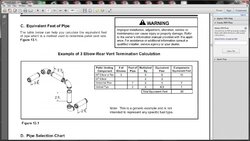I will finally be purchasing the Harman 52i Accentra insert after many hours of research on here.
Now that all my research on the stove itself is done it's time to figure out what 20' chimney liner
to get. I will be installing everything myself. I have been reading some reviews on the liners already
and just like the stove I over analyze until my head is about to explode. Some of the liners that I have been looking at are Flex King, Duravent, Rock Flex, Metal-Fab, Fire Flex. Have I missed any (LOL) ?
I am paying big money for the stove and I am not going to cheap out on a liner. Any input on what
liner I should get would be greatly appreciated. Ty
Now that all my research on the stove itself is done it's time to figure out what 20' chimney liner
to get. I will be installing everything myself. I have been reading some reviews on the liners already
and just like the stove I over analyze until my head is about to explode. Some of the liners that I have been looking at are Flex King, Duravent, Rock Flex, Metal-Fab, Fire Flex. Have I missed any (LOL) ?
I am paying big money for the stove and I am not going to cheap out on a liner. Any input on what
liner I should get would be greatly appreciated. Ty


